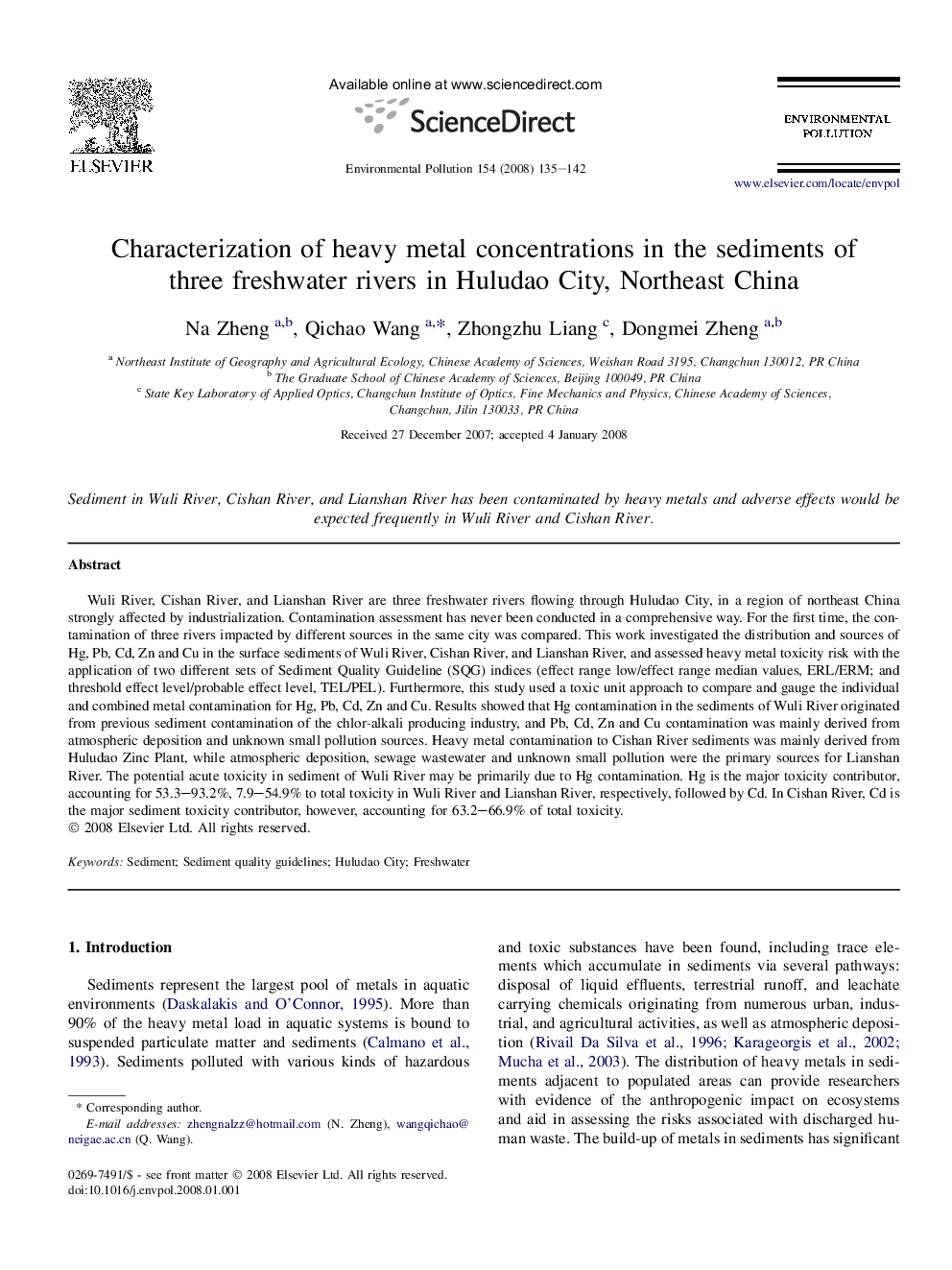| Article ID | Journal | Published Year | Pages | File Type |
|---|---|---|---|---|
| 4426568 | Environmental Pollution | 2008 | 8 Pages |
Wuli River, Cishan River, and Lianshan River are three freshwater rivers flowing through Huludao City, in a region of northeast China strongly affected by industrialization. Contamination assessment has never been conducted in a comprehensive way. For the first time, the contamination of three rivers impacted by different sources in the same city was compared. This work investigated the distribution and sources of Hg, Pb, Cd, Zn and Cu in the surface sediments of Wuli River, Cishan River, and Lianshan River, and assessed heavy metal toxicity risk with the application of two different sets of Sediment Quality Guideline (SQG) indices (effect range low/effect range median values, ERL/ERM; and threshold effect level/probable effect level, TEL/PEL). Furthermore, this study used a toxic unit approach to compare and gauge the individual and combined metal contamination for Hg, Pb, Cd, Zn and Cu. Results showed that Hg contamination in the sediments of Wuli River originated from previous sediment contamination of the chlor-alkali producing industry, and Pb, Cd, Zn and Cu contamination was mainly derived from atmospheric deposition and unknown small pollution sources. Heavy metal contamination to Cishan River sediments was mainly derived from Huludao Zinc Plant, while atmospheric deposition, sewage wastewater and unknown small pollution were the primary sources for Lianshan River. The potential acute toxicity in sediment of Wuli River may be primarily due to Hg contamination. Hg is the major toxicity contributor, accounting for 53.3–93.2%, 7.9–54.9% to total toxicity in Wuli River and Lianshan River, respectively, followed by Cd. In Cishan River, Cd is the major sediment toxicity contributor, however, accounting for 63.2–66.9% of total toxicity.
